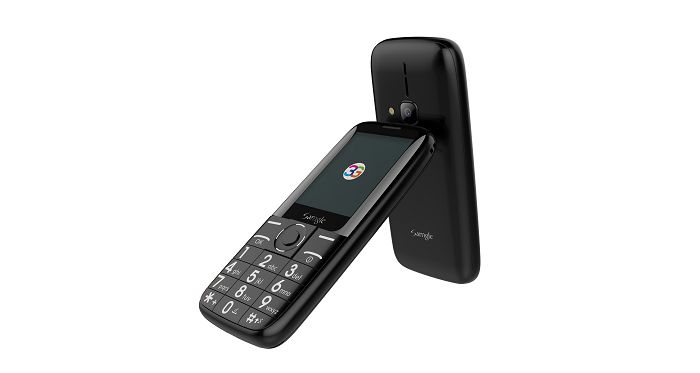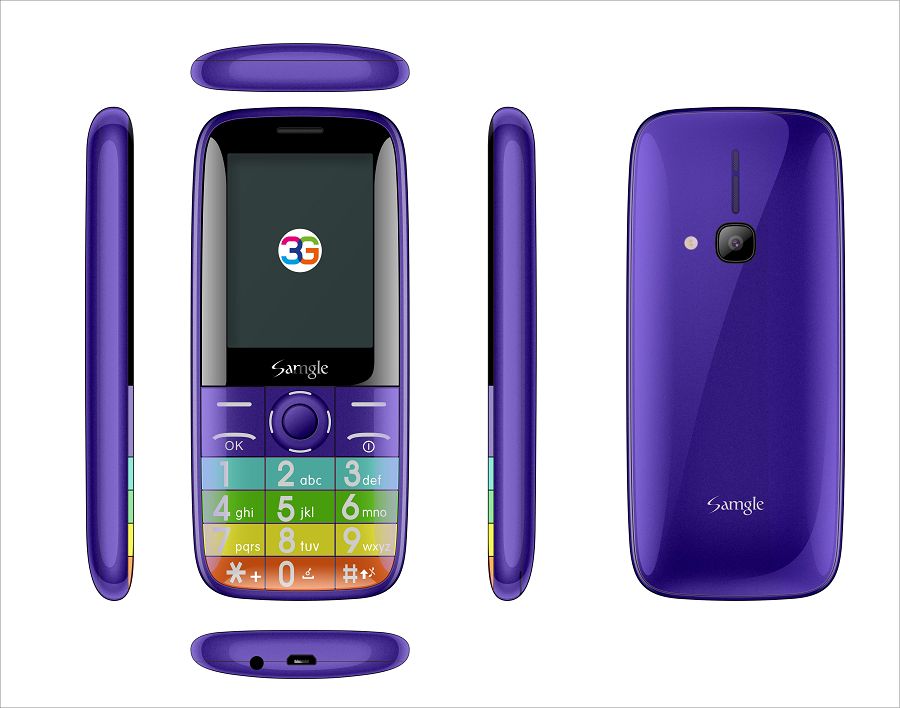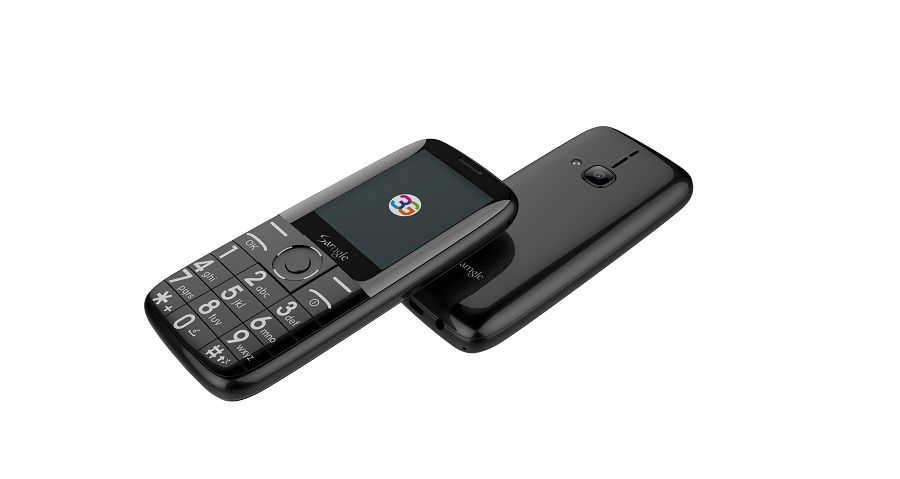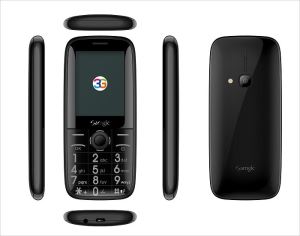




Zoey 2.4-inch Bar/Big Button
-
Payment


-
Origin
China Mainland
-
Minimum Order
5
-
Packing
Pieces
- Contact Now Start Order
- Description
Product Detail
With 1450mAh large battery, Samgle zoey 3G provides you with unbelievably long-lasting companion. Even under heave use, it can last at least 12 days.
Display:2.4" inch curved window
Storage:128MB+64MB
Support micro SD (T-Flash):Max to 32GB
Camera:Rear SW 2.0M
Color:Black?Purple?Blue
Wireless & Networks
Band Details(EU):
GSM:B2/B3/B5/B8 (1900/1800/850/900)
WCDMA:B1/B8 (2100/900)
SIM Card Type: SIM + SIM + TF
LanguageEnglish, Espanol, Portuguese, Italian, German, French, Russian, Arabic, Poland, Dutch, Bahasa Melayu, Chinese, Hindi, Tamil, Thai, myanmar,
SIM:Dual sim dual standby, Dual SIM; SIM1 is 3G, SIM2 is 2G
Dimension and Weight
Product size: 5*126*14.3mm
Product weight:64.5g
Battery weight:32g
Package size:142*136*35mm
Package
1 x Phone
1 x Battery (1450 mAh)
1 x AC power charger adapter ( 100~240V / EU plug)
1 x English user manual


















Q: Qual o idioma desse aparelho. Portugues?
A: Please note below:
Languages: English, Espanol, Portuguese, Italian, German, French, Russian, Arabic,
Poland, Dutch, Bahasa Melayu, Chinese, Hindi, Tamil, Thai, myanmar,
It supports Portuguese.
Thanks for your attention.
Q: Is this model really installed in Czech?Language Russian?
A: Thanks for your inquiry.
English, Espanol, Portuguese, Italian, German, French, Russian, Arabic,Poland, Dutch, Bahasa Melayu, Chinese, Hindi, Tamil, Thai, myanmar,
Please note that it can be set to Russian
Q: Hi there I was wondering if this phone works in Australia 3G or 4g or 5 g networks thank you
A: This phone will work with GSM networks: 2g:GSM 850/900/1800/1900MHz .
3G: WCDMA 900/2100MHz
Q: hello, does this phone have the feature to record incoming calls?thank you
A: Thanks for your inquiry.
Please note that it has the call records
Q: Can I receive text messages with this phone?
A: Yes, the item can support the function.
Q: Does it have Greek Language ?
A: Yes, the item can support Greek.
Q: Is this model really installed in Czech?Language Russian?
A: Thanks for your inquiry.
English, Espanol, Portuguese, Italian, German, French, Russian, Arabic,Poland, Dutch, Bahasa Melayu, Chinese, Hindi, Tamil, Thai, myanmar,
Please note that it can be set to Russian
What is WCDMA?
WCDMA stands for Wideband Code Division Multiple Access. It is one of the main systems used for third generation, or 3G, mobile communication networks. The term is often used interchangeably with UMTS, which stands for Universal Mobile Telecommunications Systems. Technically WCDMA is merely one example of UMTS technology.
The most prominent use of WCDMA is in Japan where the country's largest mobile phone operator, NTT DoCoMo uses the technology. It was DoCoMo which originally developed WCDMA. The firm then successfully lobbied for it to be accepted as an international standard.
WCDMA is used across the world in dozens of countries. It is most prominently used in Asia and Europe. Outside of Japan, the UMTS name is generally used for marketing the system.
The WCDMA system combines two main types of mobile phone technology: CDMA and GSM, which stands for Global System for Mobile communications. In the United States, most cellphone network providers use only one of these two technologies. One of the main reasons WCDMA has struggled to get a foothold in the US is that it uses two channels, each covering 5Mhz. This is a relatively large "chunk" of the airwaves, which has been problematic as the US was slow to allocate new frequencies specifically for 3G systems.
There are several key advantages to WCDMA. One is that each transmitter is assigned an identification code. This means that data from multiple transmitters can be carried over the same frequency in the same geographical area at the same time without interference or loss of signal strength.
The system also uses power control. This adjusts the strength of the signal transmitted by each cellphone so that it reaches the nearest transmitter at the same strength, regardless of how far away the phone is. This avoids the transmitter receiving signals which are excessively strong or weak, which could limit the transmitter's efficiency.
Another benefit is that WCDMA can cope particularly well when there are many devices in one area. This makes it particularly suitable for densely populated areas such as some major Asian cities. The system is also well suited to the technical requirements presented by video calls.
The main disadvantages of WCDMA are that it is not used throughout the entire world, which limits take-up of compatible handsets among people who travel internationally, and that it is a relatively complex system which can be expensive to introduce into a new market.
What is Symbian OS?
Symbian OS is an operating system for mobile phones primarily used on Nokia advanced or data enabled smart phones. Symbian OS runs exclusively on ARM processors and has evolved from Psion's EPOC which was developed as a rudimentary operating system for early electronic organizers. The Psion EPOC OS was referred to EPOC16 beginning in the late 1990's to help distinguish it from the newer 32bit Operating system EPOC32, which eventually became Symbian OS. Psion software created a joint venture with several mobile hardware manufacturers, Ericsson®, Motorola®, and Nokia® called Symbian and eventually took on the name Symbian Software, renaming EPOC32 Symbian OS.
The key advantage of EPOC32 over its 16bit predecessor is the ability to multi-task, perform multiple functions at once. In newer devices, this might mean being able to surf the web using the phone and not lose your content when answering an incoming call.
Many third party manufacturers were able to license the 32bit EPOC OS for their organizers and other mobile data devices. Since the late 1990's,Symbian OS has become one of the most popular mobile device operating systems available.
Symbian OS has also adapted to include soft features such as global positioning software (GPS) which will become as common as a camera in the very near future. Service providers and other companies could then publish location based services that interact with the GPS found in a mobile phone, appearing on the display once the user is near an application.
In recent years, Microsoft® and Palm® have been the most discussed providers of operating system software for mobile phones, but Symbian has been powering phones for quite some time. The support for the much established mobile platform is far and wide, though much of the press lately has centered around Apple's iPhone® and other offerings, including the Google Android™ OS for mobile devices.
It will be interesting to see what hardware is developed for use with Symbian OS in the future to compete with phones like the iPhone® and the latest mobile devices from Palm® and Microsoft®.
What is Text Messaging?
Text messaging is a term for short communications made through cell phones. It uses what is called the Short Message Service, and so is often called SMS for short. It is also sometimes referred to as txting, using the shorthand common in such messages as a way of dealing with short character limits and often bulky interfaces.
The origin of text messaging is somewhere back in the late-1980s and early-1990s. The first commercial texting took place in 1991, sent from a computer to a handset. It didn’t catch on for some time after these initial texts, and by the mid-1990s it was scarcely being used throughout Europe. By 2000, the service was being used with some intermittent frequency in Europe and Asia, although it was still rarely used in the United States, and fewer than 20 billion text messages were sent worldwide.
By 2001, text messaging had caught on and began to spread like wildfire, with the number of messages sent up to over 250 billion, a more than ten-fold increase. Young users especially seemed drawn to it as a quick and easy way to stay in constant contact. By 2003, more than half of all cell phone users were thought to be sending texts. It is now the most popular service used with cell phones, and it has become a fixture of modern life.
Text messaging is generally billed as an extra service by cell phone providers, either on a per-text basis, with an average of $0.10 US Dollars, or as part of a bundle package with a monthly fee, which brings the per-text cost down somewhat. The service represents billions of dollars worth of extra profit for cell phone companies, and as they use very little bandwidth relative to phone conversations, the profit margins are large.
Not only is texting used for person-to-person communication, but a number of groups have jumped onto the craze in recent years. Political campaigns, for example, have used it as a way to keep their supporters up to speed on events as they happen. Protesters and organizers have used text messaging as a way to stay connected during actions, mobilizing large groups of people in real time. Various businesses allow users to sign up for updates via text, or to receive bills this way. It can be used to stay up to speed on stock prices, sports scores, and any number of other small bits of data that change rapidly.
Since most phones have small keys and, in the case of numerical keypads, buttons may need to be pressed multiple times to find the correct letter, a whole slang of shorthand and acronyms has developed around text messaging. Replacing words with numbers, contracting words to single letters, and even substituting seemingly-arbitrary strings of numbers for entire sentences all make up the world of texting acronyms. Examples include phrases such as "c u l8r" to mean See you later, "r u OK?" to mean Are you okay, and "143" to mean I love you, where each number represents the number of letters in the word it substitutes.
What is GPRS Internet?
General Packet Radio Service (GPRS) Internet technology employs Global System for Mobile Communications (GSM) technology to allow users to access the Internet from mobile phones with GSM capability. GPRS cell phones can transmit and receive packets, or units of data. This allows GSM network cell phone service providers to offer their users basic Internet services such as emailand text messages.
GPRS Internet service also allows Wireless Application Protocol (WAP) Internet browsing with a cell phone. With an average transmission speed of about 35 kilobits per second (kbps), GPRS Internet service is considered the first level of second-generation (2G) Internet mobile technology. Many personal digital assistants (PDAs) use GPRS Internet technology.
The user's specific cell phone number is not used to connect to a GPRS Internet service. Instead, the connection is made through an Access Point Name (APN). Users are billed according to how much data is transmitted during each session, as well as the overall level of data transmission during a specific billing period. This differs from voice calls, which are billed by the minute or by overall use subtracted from an allotment of time specified in the contract between the user and the cell phone provider.
GPRS Internet service often is extremely expensive. There are other drawbacks, such as the fact that Internet browsing is often limited to a monochrome display. The slow transmission speed makes large email attachments and other data-intensive operations difficult, if not impossible, for GPRS Internet-capable devices to handle. As a result, third-generation (3G) technology replaced GPRS technology and other 2G applications, just as 2G innovations replaced analog, or first-generation, technology.
Enhanced Data GSM Environment (EDGE) networks have been developed specifically to handle 3G technology. EDGE network service allows a richer Internet experience for cell phone users, including video clips and full-color Internet browsing. EDGE transmission speeds average 75 to 135 kbps. These enhanced features are why many businesses have migrated their mobile technology to 3G and EDGE networks.
Another important distinction between GPRS Internet service and EDGE network service is that EDGE networks allow for time division multiple access (TDMA). TDMA divides a single channel into multiple slots through a process known as multiplexing. Multiplexing combines several low-speed signals for transmission over a single high-speed channel, allowing analog and digital transmission to occur simultaneously.
- 3310 Cheap 2.4-inch 3G Feature Phones 5 Pieces / (Min. Order)
- 3310 Dual SIM Big Fonts 3G Cell Phone 5 Pieces / (Min. Order)
- 3310X 3G Low Cost Senior Phone 5 Pieces / (Min. Order)
- 3310X 3G Senior Phone 5 Pieces / (Min. Order)
- 3310X 3G Feature Phone 5 Pieces / (Min. Order)
- 3310X 3G Bar Senior Phone 5 Pieces / (Min. Order)
- 3G WCDMA 2.4 Inch 5 Pieces / (Min. Order)
- 3G WCDMA Dual SIM 5 Pieces / (Min. Order)














 Favorites
Favorites
